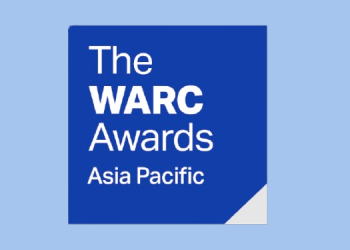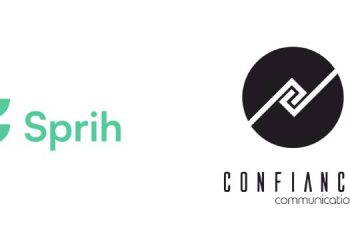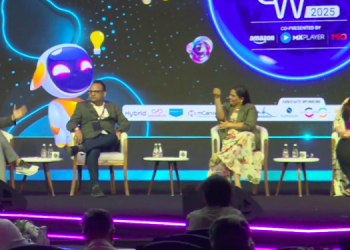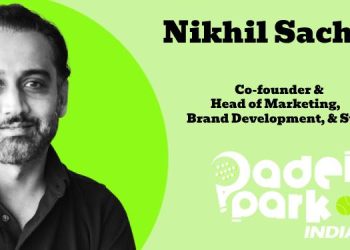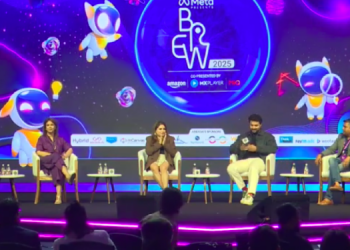Mumbai: On the second day of Goafest 2024 there was a session presented by Sports18 & JioCinema, titled Media Agencies Panel – The Changing Expectations from a Media Client Leader, and the Challenges in Getting There,
Several points were made. A successful client leader has to be client obsessed. An understanding of the consumer journey is also important. If someone aspires to be a client leader for a big brand then that person should always be on learning which means that upskilling is important. It is important that a client leader thinks about the fact that he/she is in a partnership with the client. Dealing with Gen Z employees is also an important part of being a good client leader. At the end of the day as long as the attitude is right anyone can be a client leader.
The panellists were Ajay Gupte, CEO Wavemaker South Asia; Anita Kotwani, CEO Media South Asia at Dentsu; Tanmay Mohanty, CEO Publicis Media Services India; and Vaishali Verma, CEO Initiative India. Guiding the discussion was Vikram Sakuja, partner and group CEO of Media & Out-of-Home at Madison Communications.
The panel explored the evolving expectations placed on media client leaders and the challenges they face in meeting these demands. Through this conversation, key requisites for an effective client leader were explored, where Verma stressed that the requirements for a good client leader vary with each category and client. She emphasised the importance of identifying the nature of the business and then positioning a client leader whose skills and experience would be an asset to both the client and the brand.
To this, Kotwani added, “A client leader needs to be obsessed with winning for the client and their profitability.” She shed light on the importance of being client obsessed. “You need to start by being client-obsessed. If I can understand his business as well as the client understands it, then the value that I can add back to his business is tremendous. If I can know enough about a CMOs business, maybe as much as he does, I will be able to partner with them a lot better. We look at how we can immerse ourselves in their businesses and understand their challenges. When they need to drive growth, I need to understand the areas in which they are having issues, concerns or challenges, and then how I address them with retrofitting solutions that fit in from our side. So the match of that is what is becoming very integral.”
Gupte brought attention to whether the client leader needs to be a single point of contact (SPOC). While acknowledging that much has changed in the industry, he noted that some fundamentals remain the same, such as the importance of understanding the client’s needs. He pointed out that change is a constant, and a client leader must evolve with market shifts and the information available, maintaining a client-centric approach.
“If a client leader is obsessed with success for the client and obsessed about understanding the consumer better, you find the solution. So while things have changed, I think this remains a constant. Anyone with these two basic capabilities or criteria will succeed,” he said.
He went on to add that the second part is about change and transformation. Change he explains is a constant. It is imperative that a client leader understands the data journey of the consumer, understands how the consumer interacts with different media forms, what options are available, The client leader also has to understand the data that is available on the client side, because there is so much more information available to be up to date. A regular transformation is required.
Mohanty noted that it is important that the client leader thinks about the fact that what he/she is doing is about being in a partnership with the client. When asked about what makes for a good client leader Verma is in favour of getting a person who comes from a planning background. That is because that person knows how to manage a team. The job she explains besides the client relationship is also about ensuring that the team within them or under them works up a collaborative way of working.
Mohanty spoke about the importance of being able to sell. It is important according to him to sell the metric system both at the internal and external level. “He doesn’t have to know everything but the ability to sell and understand and be able to bring that solution to sell to the client is going to be the biggest thing.” This for him is more important than whether the person is digital or mainline.
The session also dwelt on the importance of empathy. A client leader must also look at things from a clients point of view. Also while an agency’s team might pushback on a clients needs if they feel that those are not realistic if the team stretches itself the client will appreciate it and empathise. The leader must understand both his agency’s side and the client’s side to succeed.
The issue of working with Gen Z employees was brought up. Verma noted that dealing with Gen Z employees in her agency is a challenge in terms of retaining them. The key is to take them along for the journey rather than just delegating work to them. One must explain to them that they are a part of the process. Kotwani said that GenZ’s desire for work life balance must be respected and applauded. The session noted that Gen Z has certain expectations which have to be managed.
Another issue brought up is that agencies shouldn’t be caught unawares when a client takes away some business by doing a deal with a Saas platform or doing the work in-house. That is why it is important to see how immersed a client leader is in the client’s business.
Kotwani advised client leaders to keep upskilling for the new age ecosystem changes that are happening. “When you’re trying to build a larger organisation, you have to have a strong learning and development agenda within your organisation. If the skill set is not getting upgraded at the pace with which the industry is moving, then you’re going to fall back. That is the focus that we like to ensure that the target is getting upskilled.”


